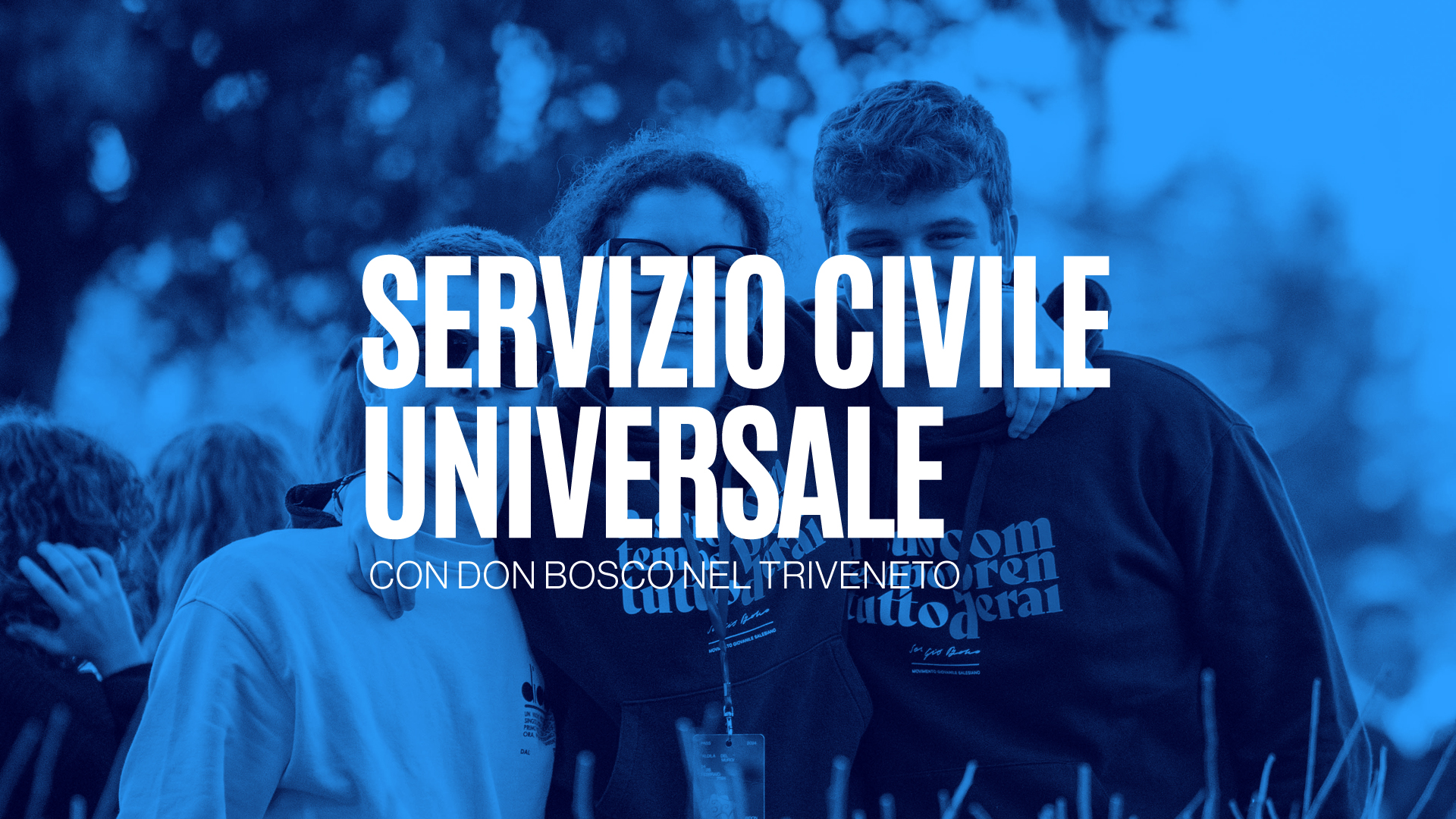World Youth Day
La creazione delle Giornate Mondiali della Gioventù è stata una delle scelte profetiche del Beato Giovanni Paolo II. Sono “una medicina contro la stanchezza del credere, un modo nuovo, ringiovanito, dell'essere cristiani, una nuova evangelizzazione vissuta. Il popolo delle GMG è un popolo in movimento, in cammino...

My starting point is number 141 of the Instrumentum Laboris. It speaks of World Youth Day as a real form of initial proclamation on a global scale.
The institution of World Youth Day was one of the prophetic options made by Blessed John Paul II that had a profound influence on the life of the Church and that of the whole world. The pope explained the reasons for his decision back in 1985. He said that “all young people should feel that the Church cares for them. That is why the whole Church all over the world, united with the Successor of Peter, must engage ever more with youth, connecting with their anxieties and cares, their eagerness and hopes. We must reach out and respond to their expectations by communicating the certainty that is Christ, the Truth that is Christ, the love that is Christ, and to do so through proper instruction – the necessary and contemporary way of evangelisation”. [1] The pope was aware that the world of youth was extremely important mission territory for the Church at the threshold of the third millennium. The history of WYD – that has now spanned over thirty years – has definitely confirmed John Paul II’s providential intuition. It is thanks to WYD that the youthful face of the Church can be seen, full of the joy of faith and missionary zeal. World Youth Day has been seen to be an extraordinarily effective instrument for the evangelisation of the younger generations. It continues to amaze pastors and the youth themselves. Over the past few decades a new generation of young people has been born that is often called “the WYD generation”.
The key person in WYD is the pope, the successor of Peter, a witness and teacher of the faith, a catechist par excellence. Cardinal Jean-Marie Lustiger, when speaking about World Youth Day in Paris in 1997, referred to the special relationship that young people have with the Holy Father: “When they say that they love him, this is also their way of taking their place in the Church. This cry of theirs establishes a relationship with the institution that is very different from the one they express to their parents or the one that appears in surveys [...] By loving the pope, it is then in him and through him that young people love the Church, and this is what they want deep down in their hearts. John Paul II gives them the opportunity to express this and experience it. His presence is the catalyser and guarantor”. [2]
The WYD people are a people on a journey. This global pilgrimage of young Christians in the footsteps of the Successor of Peter continues to amaze the world. There have been so many conversions and so many lives have changed direction. So many important discoveries have been made by young people. They have discovered Christ – the Way, the Truth and the Life. They have discovered the Church to be a mother and teacher and to be a “company of friends” (Benedict XVI) that gives support to the journey of existence. They have discovered that the Successor of Peter is a sure guide and a friend to be trusted. WYD has become a “laboratory of faith” for so many young people. This is how Pope John Paul II liked to describe it. It is a place where the kind of spirituality found is not inconsistent with being young. WYD has also become a place where vocational decisions are considered and made – those to the priesthood, consecrated life or Christian marriage.
Pope Benedict XVI said that World Youth Day is a “remedy against faith fatigue”, and “a new, more youthful form of Christianity”. It is “new evangelization put into practice”, a great sign of hope for the Church and the entire world. [3] We must not, of course, consider WYD to be an isolated event. It has to be well prepared, and it must be followed up in the normal youth ministry in the dioceses and parishes. In other words, it must always be a “new beginning” in the pastoral engagement of the Church towards the younger generations.
We remember with gratitude World Youth Day in Madrid in 2011 where we witnessed the wonderful testimony of faith of over two million young people. Now young people are preparing to head for Rio de Janeiro in Brazil in 2013. In the carioca city, Christ the Redeemer of Corcovado is an expression of the deeper meaning of WYD which is the centrality of Christ. Christ is there with arms open wide to welcome them, an unconditional invitation to the youth of the world. This is how the great youthful adventure of faith continues.
[1] John Paul II, Address to the College of Cardinals, the Curia and the Roman Prelature, 20 December 1985.
[2] “L’eco della XII Giornata Mondiale della Gioventù”. An interview with Cardinal Jean-Marie Lustiger, Archbishop of Paris, in L’Osservatore Romano, 1 October 1997, pp. 6-7.
[3] Cf Benedict XVI, Address on the occasion of Christmas greetings to the College of Cardinals and the Curia, 22 December 2011.
Versione tradotta in italiano
Le Giornate Mondiali della Gioventù
Il mio intervento prende spunto dal numero 141 dell’Instrumentum Laboris che parla delle Giornate Mondiali della Gioventù come vere e proprie forme di primo annuncio su scala mondiale.
La creazione delle Giornate Mondiali della Gioventù è stata una delle scelte profetiche del Beato Giovanni Paolo II che ha segnato profondamente la vita della Chiesa e del mondo intero. Nel lontano 1985 il Papa così spiegava le ragioni della sua decisione: «Tutti i giovani devono sentirsi seguiti dalla Chiesa: perciò che tutta la Chiesa, in unione con il Successore di Pietro, si senta maggiormente impegnata, a livello mondiale, in favore della gioventù, delle sue ansie e sollecitudini, delle sue aperture e speranze, per corrispondere alle sue attese, comunicando la certezza che è Cristo, la Verità che è Cristo, l’Amore che è Cristo, mediante una appropriata formazione - che è forma necessaria e aggiornata di evangelizzazione». [1] Il Papa aveva capito che il “pianeta giovani” era una terra di missione di primissima importanza per la Chiesa alle soglie del terzo millennio. E la storia delle GMG - che conta ormai più di trent’anni - ha pienamente confermato l’intuizione provvidenziale di Papa Wojty≈Ça. Grazie alle GMG, la Chiesa ha potuto manifestare al mondo il suo volto giovane, pieno di gioia della fede e di slancio missionario. Le Giornate Mondiali della Gioventù si sono rivelate uno strumento di evangelizzazione delle nuove generazioni di straordinaria efficacia, che continua a riempire di stupore sia i pastori che i giovani stessi. In questi ultimi decenni è nata una nuova generazione di giovani, comunemente chiamata “generazione GMG”...
Persona chiave delle GMG è il Papa (“persona faro”, come dicono i sociologi), Successore di Pietro, testimone e maestro della fede, catechista per eccellenza. Il Cardinale Jean-Marie Lustiger, commentando la Giornata Mondiale della Gioventù celebrata a Parigi nel 1997, diceva a proposito del singolare rapporto dei giovani con il Santo Padre: «Dire di amarlo è anche il loro modo di porsi nella Chiesa; questo grido stabilisce un rapporto con l’istituzione molto diverso da quello che esprimono dinnanzi ai loro genitori o nei sondaggi [...] Amando il Papa i giovani amano, in lui e attraverso lui, la Chiesa che in fondo desiderano e che Giovanni Paolo II dà loro la possibilità di esprimere e di vivere. La sua presenza catalizzatrice ne è garante». [2]
Il popolo delle GMG è un popolo in movimento, in cammino... Questo pellegrinaggio planetario dei giovani cristiani sulle orme del Successore di Pietro continua ancora oggi a stupire il mondo. Quante conversioni, quanti radicali cambiamenti di vita! Quali importanti scoperte per la vita dei giovani: la scoperta di Cristo: Via, Verità e Vita; la scoperta della Chiesa come madre e maestra e come “compagnia di amici” (Benedetto XVI), che sostiene nel cammino dell’esistenza; la scoperta del Successore di Pietro come guida sicura e amico di cui fidarsi. Per tanti giovani la GMG è diventata una specie di “laboratorio della fede”, come amava definirla Papa Wojty≈Ça, il luogo della riscoperta di una religiosità che non è in contrasto con l’essere giovani. Le GMG sono diventate anche luoghi particolari per maturare scelte vocazionali: al sacerdozio, alla vita consacrata oppure al matrimonio cristiano...
Per Papa Benedetto XVI le Giornate Mondiali della Gioventù sono “una medicina contro la stanchezza del credere”, “un modo nuovo, ringiovanito, dell’essere cristiani”, “una nuova evangelizzazione vissuta”, un grande segno di speranza per la Chiesa e per il mondo intero. [3] Certo, la GMG non può essere considerata un evento isolato, essa deve essere ben preparata e deve trovare un seguito nella pastorale giovanile ordinaria delle diocesi e delle parrocchie. In altri termini, deve costituire ogni volta un “nuovo inizio” nell’impegno pastorale della Chiesa a favore delle giovani generazioni.
Mentre conserviamo con gratitudine il ricordo dell’ultima Giornata Mondiale dei Giovani di Madrid 2011, durante la quale abbiamo assistito alla straordinaria testimonianza di fede di oltre due milioni di giovani, siamo ormai incamminati verso la GMG di Rio de Janeiro, in Brasile, nel 2013. Nella città carioca, il Cristo Redentore del Corcovado esprime la natura più profonda delle GMG: la centralità di Cristo. Le sue braccia aperte, accoglienti, sono un invito incondizionato per tutti i giovani del mondo. E così la grande avventura di fede dei giovani continua...
[1] Giovanni Paolo II, Allocuzione al Collegio dei cardinali, alla Curia e alla Prelatura romana per gli auguri natalizi, in “L’Osservatore Romano”, 20 dicembre 1985, p. 5.
[2] L’eco della XII Giornata Mondiale della Gioventù. Intervista al card. Jean-Marie Lustiger, Arcivescovo di Parigi, in “L’Osservatore Romano”, 1 ottobre 1997, pp. 6-7.
[3] Cfr Benedetto XVI, Discorso del Santo Padre agli Em.mi Signori Cardinali, alla Curia Romana e alla famiglia pontificia, per la presentazione degli auguri natalizi, in “L’Osservatore Romano”, 23 dicembre 2011, p. 8.
Tratto da http://www.laici.va
Versione app: 3.42.4 (a24d8a1d)


